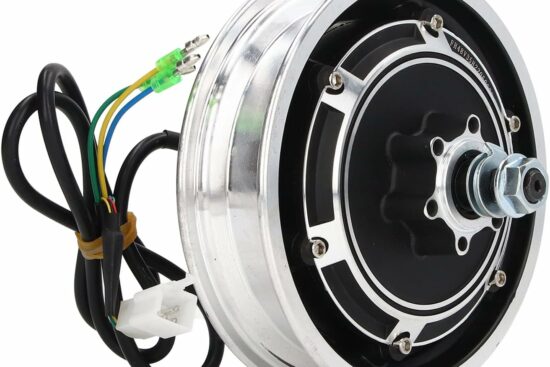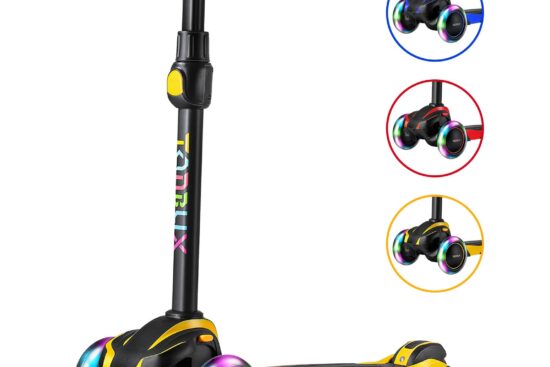
When it comes to buying tech products, the abundance of options can make your head spin. And with so many choices, it’s important to make an informed decision. That’s where reviews come in. But the question is, can you rely solely on Amazon reviews or should you also seek out expert opinions or professional reviews? Well, the answer isn’t as black and white as you might think.
While Amazon reviews can provide valuable insights from real users, they can also be a bit tricky to navigate. You’ll find a wide range of opinions, from glowing five-star reviews to scathing one-star rants. And sometimes, it can be hard to determine which reviews are genuine and which ones are fake.
That’s why it’s a good idea to turn to expert opinions and professional reviews as well. These experts have the knowledge and experience to thoroughly test and evaluate tech products, giving you a more objective view. They often have access to the latest models and can provide detailed analysis of the pros and cons.
But don’t worry, we’ll delve deeper into this topic in the article. We’ll discuss the pros and cons of relying solely on Amazon reviews, the importance of expert opinions, and how to find trustworthy professional reviews. So stick around, and we’ll help you navigate the tricky world of tech product reviews.
Identifying Reliable Reviews
When it comes to purchasing tech products, making informed decisions is crucial. With an overwhelming number of options available on Amazon, it can be challenging to navigate through the vast sea of reviews and determine which ones are reliable. To ensure that you are making the best choice, it is important to understand the criteria for reliable reviews.
Understanding the Criteria for Reliable Reviews
Reliable reviews are those that provide accurate and unbiased information about a product. One way to identify reliable reviews is to look for those that are detailed and specific. Generic reviews that lack specific details can be a red flag, as they may not provide enough information to make an informed decision.
Another criterion to consider is the review history and credibility of the reviewer. Look for reviewers who have a track record of leaving detailed and authentic reviews. Pay attention to the reviewer’s credibility by examining their profile, checking if they have reviewed other products, and reading through their previous reviews to assess their consistency and expertise.
Looking for Detailed and Specific Reviews
Detailed and specific reviews provide valuable insights into a product’s performance, features, and overall user experience. Instead of relying on vague statements like “this product is good,” look for reviews that highlight specific aspects of the product.
For example, if you are looking for a new smartphone, a reliable review might include information about the camera quality, battery life, performance, and any unique features or drawbacks. The more specific the review, the better equipped you will be to make an informed decision.
Considering the Review History and Credibility of the Reviewer
The review history and credibility of the reviewer can significantly impact the reliability of a review. If a reviewer has a history of leaving detailed and informative reviews across various products, it indicates a certain level of expertise and credibility. On the other hand, if a reviewer has a history of leaving generic or biased reviews, it may raise questions about their reliability.
Take the time to explore the reviewer’s profile, read through their previous reviews, and assess whether their opinions align with your own preferences. If a reviewer consistently provides helpful and unbiased insights, their reviews can serve as a reliable resource when evaluating tech products on Amazon.
Distinguishing Fake Reviews
Fake reviews can be a significant issue on platforms like Amazon, where the credibility of reviews can heavily influence purchasing decisions. Learning how to identify and distinguish fake reviews from genuine ones is essential in order to make well-informed choices.
Identifying Patterns of Suspicious Reviews
One way to identify fake reviews is to look for patterns of suspicious behavior. Take note of reviews that appear overly positive or overly negative, as these extreme opinions can be a sign of fake or biased reviews. Additionally, pay attention to reviews that have been posted in a short span of time, especially if they are excessively similar in content or language.
Another red flag to watch out for is a sudden spike in positive reviews for a product. If a product has a significant number of new positive reviews within a short period of time, it could indicate that these reviews were solicited or manipulated.
Checking for Suspicious Language or Content
Fake reviews often contain certain patterns or language cues that can indicate their lack of authenticity. Look out for reviews that contain excessive use of superlatives, excessive capitalization, or an overwhelming amount of technical jargon. Genuine reviews tend to be more balanced, providing both positive and negative aspects of the product.
Additionally, be wary of reviews that seem out of place or do not provide specific information about the product. These reviews may be generic and not based on an actual user experience with the product.
Researching the Reviewer’s Profile for Authenticity
To better determine the authenticity of a review, take the time to research the reviewer’s profile. Look for indications of whether they are a verified purchaser, as this adds credibility to their review. Additionally, check if the reviewer has provided detailed reviews for other products in the past. A reviewer who consistently leaves detailed and informative reviews is more likely to be genuine.
If an account has only recently been created or has a small number of reviews, it may be worth approaching those reviews with caution. They may be created specifically for the purpose of posting fake reviews.
Understanding Star Ratings
Star ratings are a common feature on Amazon and serve as a quick way to assess the overall reputation of a product. However, it is important to understand the meaning behind star ratings and consider additional factors when evaluating a product.
Interpreting the Meaning Behind Star Ratings
Star ratings provide a general indication of a product’s quality, but they should not be the sole factor in making a purchasing decision. It is important to remember that star ratings are subjective and vary from person to person. What may be a 5-star product for one person may not meet the expectations of another.
When assessing star ratings, it is helpful to read through the accompanying reviews to gain a better understanding of why users have given the product a particular rating. This will provide a more comprehensive view of the product’s strengths and weaknesses.
Considering the Number of Ratings and Overall Rating Distribution
The number of ratings and the overall rating distribution can give you a better understanding of the reliability of the star ratings. A product with a high number of ratings and a balanced distribution of ratings may be more reliable than a product with a few ratings and extreme ratings in either direction.
For example, a product with hundreds of reviews and an average rating of 4 stars may be more trustworthy than a product with only a handful of reviews and a perfect 5-star rating. The larger the sample size, the more reliable the star ratings are likely to be.
Understanding the Impact of Biased or Exaggerated Ratings
It is important to be aware that star ratings can be influenced by biased or exaggerated ratings. Sometimes, sellers may offer incentives or discounts in exchange for positive reviews, resulting in an inflated rating for the product.
Additionally, some users may give a product a low rating for reasons that are unrelated to the product’s actual quality. For example, a user may leave a negative review because of issues with shipping, rather than the product itself. It is important to read through the content of the reviews and consider the reasons behind the ratings to gauge their reliability.
Finding the Best Tech Products on Amazon
Amazon offers a wide range of tech products, making it a popular platform for purchasing electronics and gadgets. To find the best tech products on Amazon, there are several strategies you can employ.
Utilizing Filters and Search Options
Amazon provides various filters and search options to narrow down your product search. Take advantage of these tools to select specific criteria such as price range, brand, customer ratings, and more. By filtering your search results, you can refine your options and focus on the products that meet your specific needs and preferences.
Exploring Customer Recommendations and Popular Choices
One effective way to find the best tech products on Amazon is by exploring customer recommendations and popular choices. Pay attention to Amazon’s “Best Sellers” and “Most Wished For” lists, as these indicate products that are highly favored by customers. Additionally, check customer reviews and ratings to gauge the general satisfaction level of a product.
Comparison Shopping for Multiple Options
To ensure you are getting the best tech product for your needs, it is advisable to compare multiple options. Take the time to research and compare similar products in terms of features, specifications, and price. By comparing products, you can make a more informed decision and choose the one that offers the best combination of quality, features, and value.
Navigating Conflicting Reviews
It is not uncommon to come across conflicting reviews for a particular tech product on Amazon. Some users may praise a product while others may criticize it. When faced with conflicting reviews, it is important to analyze the pros and cons of each review and consider your own preferences and needs.
Analyzing the Pros and Cons of Each Review
Take the time to read through conflicting reviews and analyze the pros and cons mentioned by each reviewer. Look for common themes and pay attention to specific aspects that are mentioned repeatedly. By understanding the different perspectives, you can determine which aspects of the product are important to you and make a decision based on your own priorities.
Considering Individual Preferences and Needs
When evaluating conflicting reviews, it is important to consider your own preferences and needs. What may be a deal-breaker for one person may not be a significant concern for you. Consider the features, specifications, and functionalities that are important to you and use that as a guiding factor when evaluating conflicting reviews.
Seeking Additional Sources for Review Comparisons
In addition to Amazon reviews, it can be helpful to seek out additional sources for review comparisons. Look for reputable technology websites or publications that provide expert opinions and reviews. By considering a variety of sources, you can gain a more well-rounded view of the product and make an informed decision.
Evaluating the Credibility of Reviewers
The credibility of reviewers plays a significant role in determining the reliability of their opinions. To ensure that you are basing your decision on trustworthy reviews, it is important to evaluate the credibility of the reviewers.
Examining the Reviewer’s Expertise or Background
Take the time to examine the reviewer’s expertise or background in the relevant field. If a reviewer has experience or knowledge in the specific tech product or category, it adds to their credibility. Look for reviewers who provide detailed technical insights or comparisons, as this indicates a level of expertise.
Validating the Reviewer’s Previous Reviews and Recommendations
Reviewers who consistently provide helpful and accurate information can be more reliable compared to those who have a mixed track record. Validate the reviewer’s previous reviews and recommendations by checking if their opinions align with your own experiences or expectations. If a reviewer has consistently offered accurate insights in the past, their opinions can be trusted to a greater extent.
Seeking Opinions from Trusted Reviewers or Sources
In addition to assessing the credibility of individual reviewers, it can be helpful to seek opinions from trusted reviewers or sources. Look for renowned technology experts or reputable publications that provide reliable reviews. By considering a variety of trusted sources, you can gather a range of opinions and make a more informed decision.
Impact of Negative Reviews on Product Reputation
Negative reviews can significantly impact the reputation of a product. When evaluating negative reviews, it is important to consider the reasons behind them and analyze the overall balance of positive and negative feedback.
Considering the Reasons Behind Negative Reviews
Negative reviews can stem from various reasons, such as product defects, poor customer service, or mismatched expectations. Take the time to read through the specific concerns mentioned in negative reviews and assess their validity.
If a negative review addresses an issue that is important to you, it can be a useful indicator that the product may not meet your needs or expectations. However, it is important to consider the overall balance of positive and negative reviews to gauge the overall satisfaction level of the product.
Assessing the Overall Balance of Positive and Negative Feedback
When evaluating negative reviews, it is crucial to assess the overall balance of positive and negative feedback. A product with a majority of positive reviews and a few negative ones may still be a reliable and worthwhile purchase. On the other hand, if the majority of reviews are negative, it may indicate significant issues with the product.
Additionally, consider the volume of reviews. A product with a large number of negative reviews may suggest a widespread problem, whereas a few negative reviews among a substantial number of positive reviews may indicate isolated incidents or individual preferences.
Analyzing the Specific Concerns Raised in Negative Reviews
Not all negative reviews carry the same weight. Pay attention to the specific concerns raised in negative reviews and consider if they align with your own priorities and needs. Some negative reviews may focus on aspects that are less important to you, while others may address critical issues that are deal-breakers. Analyze the specific concerns raised in negative reviews to determine their relevance to your decision-making process.
Reporting Suspicious Activities or Reviews
To contribute to maintaining the integrity of the Amazon review system, it is important to report any suspicious activities or reviews that you come across. By reporting such activities, you can help create a more transparent and reliable environment for all consumers.
Utilizing Report Functionality for Suspicious Reviews
Amazon provides a report functionality for users to flag suspicious reviews. If you come across a review that appears to be fake, biased, or violates Amazon’s review guidelines, take advantage of the report functionality. By reporting suspicious reviews, you can help prevent misleading information from influencing purchasing decisions.
Contacting Amazon Customer Support for Further Assistance
If you encounter a significant issue or suspect fraudulent activities related to a product or review, it may be necessary to contact Amazon customer support for further assistance. They will be able to investigate the issue and take appropriate action, ensuring a safer and more reliable shopping experience for all users.
Participating in Amazon’s Feedback and Reporting System
Amazon encourages users to actively participate in the feedback and reporting system. By providing feedback on product quality, reviewing the helpfulness of reviews, and reporting suspicious activities, you contribute to maintaining a reliable and trustworthy platform for all users. Your contributions can help others make informed decisions and establish a community of responsible buyers and sellers.
Participating in the Review Community Responsibly
When leaving your own reviews or engaging in discussions within the review community, it is important to do so responsibly. By adhering to certain guidelines, you can contribute to a constructive and helpful community for all users.
Providing Constructive and Honest Reviews
When leaving your own reviews, strive to provide constructive and honest feedback. Share your experiences, highlight the strengths and weaknesses of the product, and provide specific details that can assist others in making informed decisions. Avoid using unnecessary strong language or making unsubstantiated claims.
Avoiding Personal Biases and Subjective Opinions
While it is important to share your personal experiences and opinions, it is equally important to avoid personal biases and subjective opinions that may not be relevant to others. Acknowledge that personal preferences can vary and avoid making absolute statements that may not hold true for everyone. Instead, focus on providing objective information that can benefit a wider range of readers.
Engaging in Respectful Discussions and Comments
When engaging in discussions or leaving comments on other users’ reviews, it is crucial to maintain a respectful and constructive tone. Value the opinions of others and engage in respectful discussions, even if you disagree. By fostering a positive and respectful environment, you contribute to a community where users can benefit from diverse perspectives and make well-informed decisions.
Conclusion
In the digital age, online reviews have become a significant influencer in purchasing decisions, especially when it comes to tech products. While Amazon reviews can provide valuable insights, it is important to approach them with a critical mindset and seek additional sources for review comparisons.
By understanding the criteria for reliable reviews, distinguishing fake ones, and interpreting star ratings, you can make more informed choices when purchasing tech products on Amazon. Utilize filters and search options, explore customer recommendations, and engage in comparison shopping to find the best tech products for your needs.
When faced with conflicting reviews, analyze the pros and cons of each review and consider your own preferences and needs. Evaluate the credibility of reviewers and seek expert opinions or professional reviews to ensure a well-rounded assessment.
As a responsible participant in the review community, provide constructive and honest feedback, and engage in respectful discussions. By combining a thoughtful approach to Amazon reviews with expert opinions and professional reviews, you can make well-informed choices that align with your preferences and needs.




















